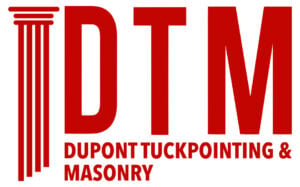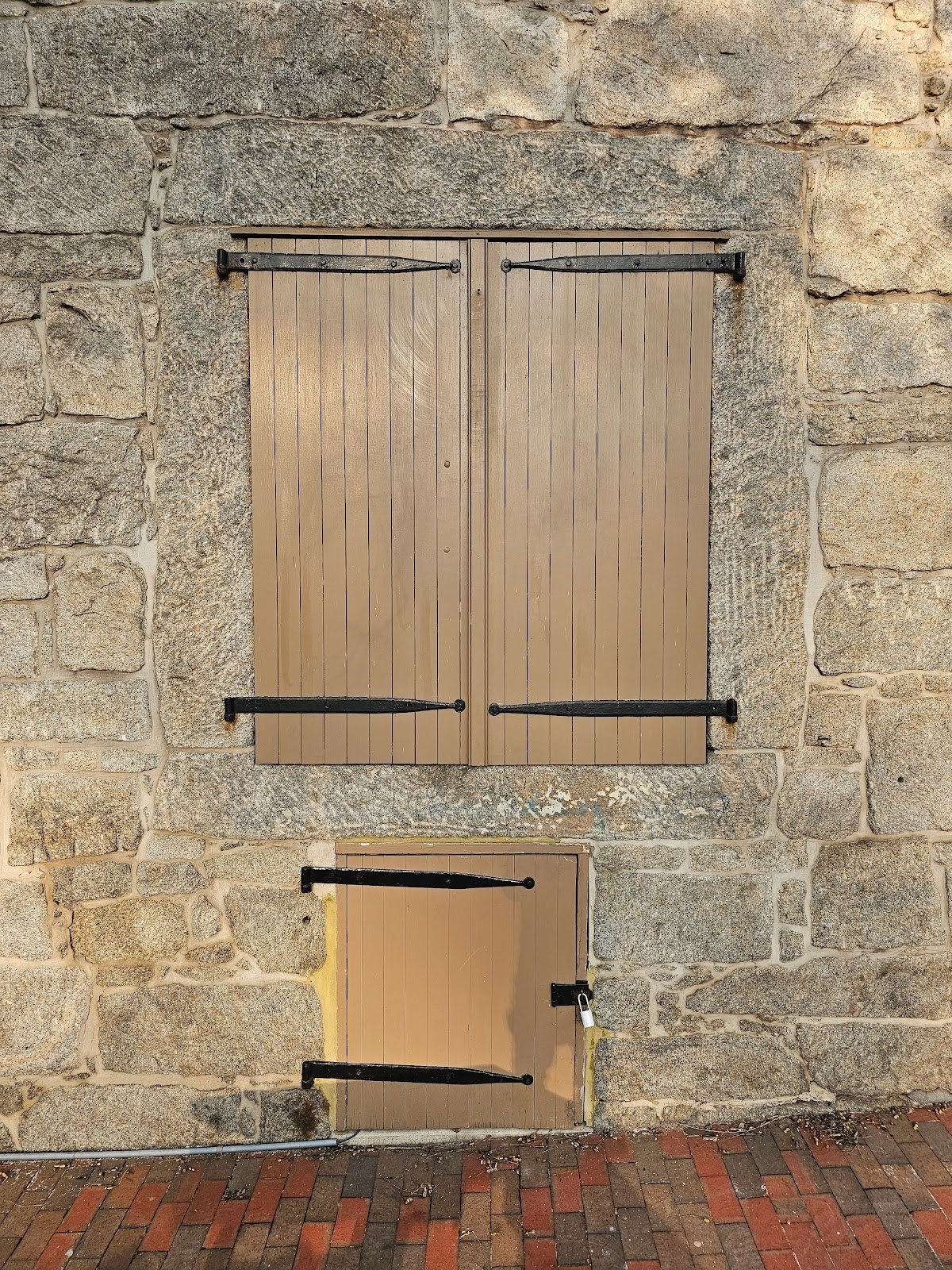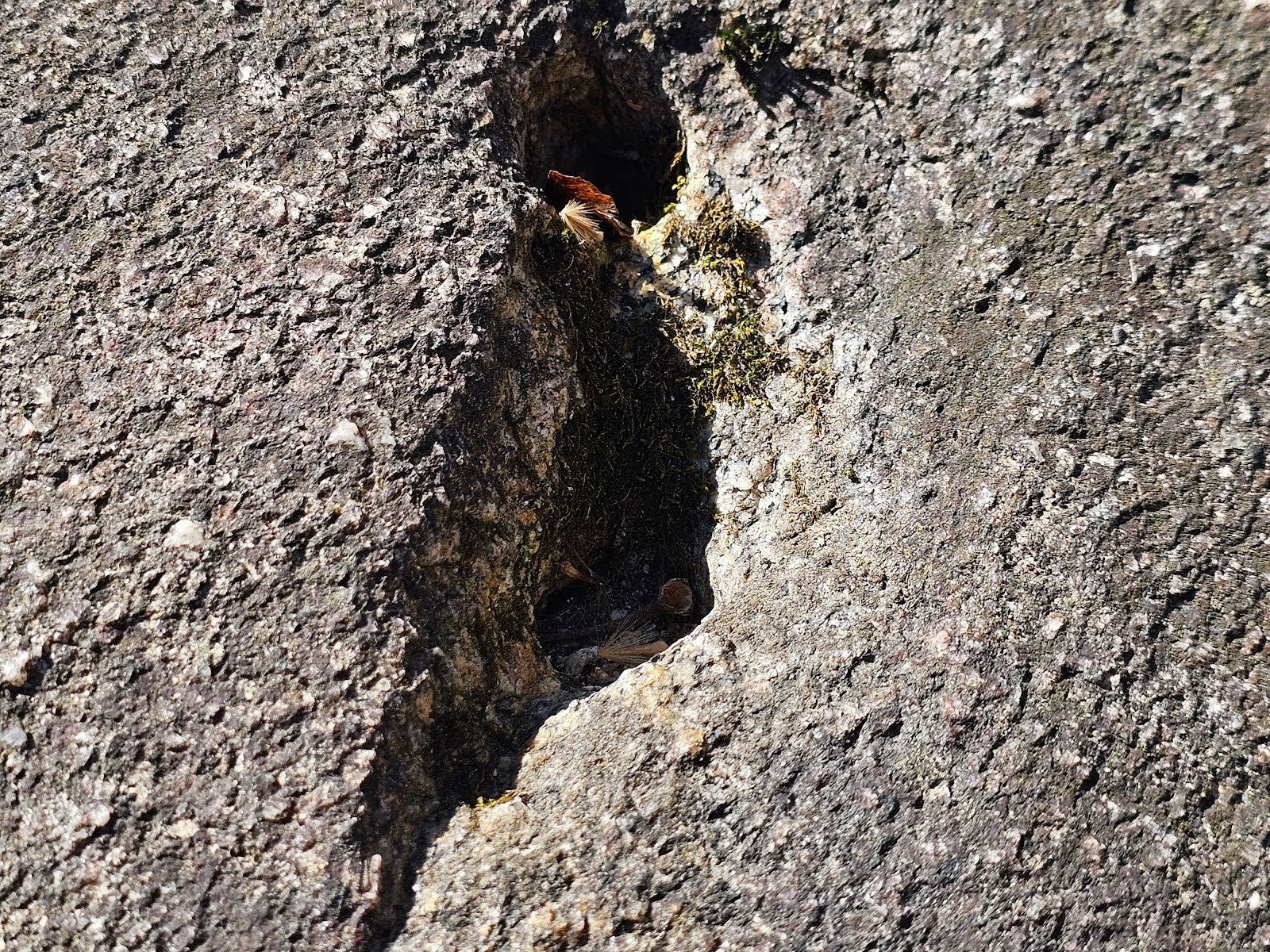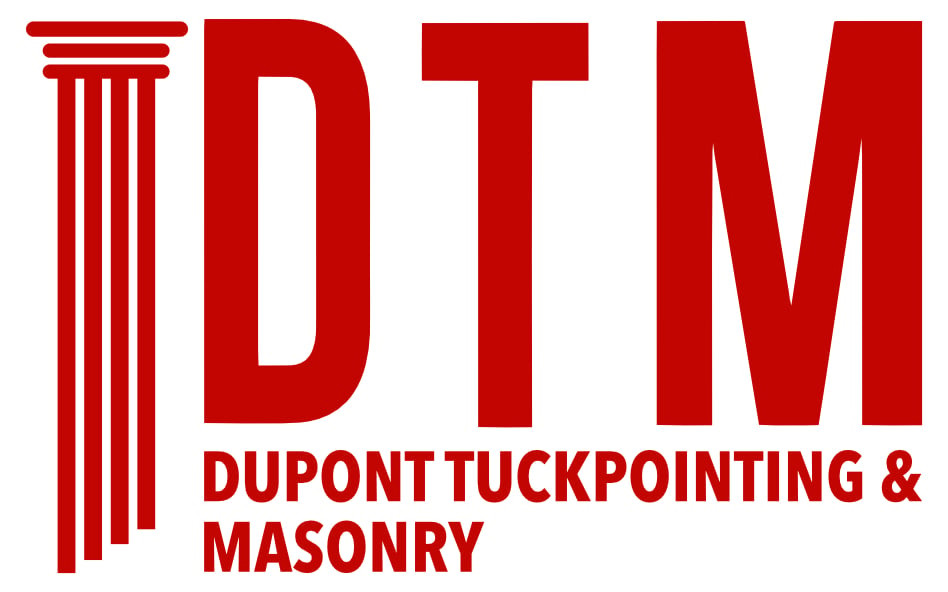There’s several different types of brick deterioration, these different types of duration affect the historic buildings of Washington DC in significant and damaging ways. Today we’re going to talk about one of those Main symptoms of deterioration called spalling. Spalling is the chipping or flaking or fragmentation of Masonry which commonly happens at the exterior face or Surface of brickwork. This is one article in a a multi-part series. Today, specifically we’ll talk about the causes of spalling and the different types of spoiling.
Definition of spalling
Spalling refers to the deterioration of masonry surfaces that causes chips, flakes or fragments to break off. It is the chipping, flaking or fragmenting of the brick or stone face material. Spalling damage can range from minor loss of surface grains of the masonry to extensive cracking, pitting and loss of larger pieces. In brick, spalling typically occurs on the exposed face or edges, but in severe cases can reach deeper into the brick unit. The underlying cause leads to failure within the masonry material itself, which separates and breaks away in small pieces or layers. This results in crumbling, cracking, pitting and progressive loss of the surface integrity.
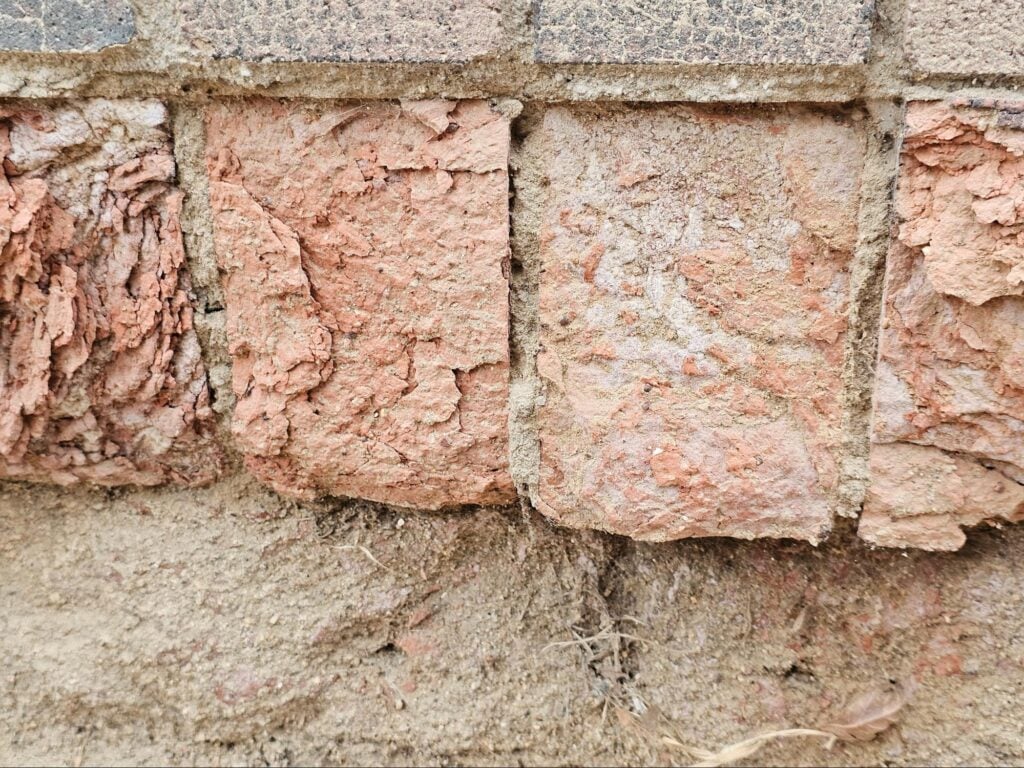
Causes of spalling
Spalling can result from a variety of mechanisms that cause stress, deterioration or weakness in the brick material. Common causes include:
Improper Repointing or Tuckpointing – Removing too much existing mortar or damaging the brick edges during raking out joints weakens the surface and leads to increased spalling. Harsh grinding methods also damage bricks. Insensitive repointing with overly hard or incompatible mortar compounds spalling over time.
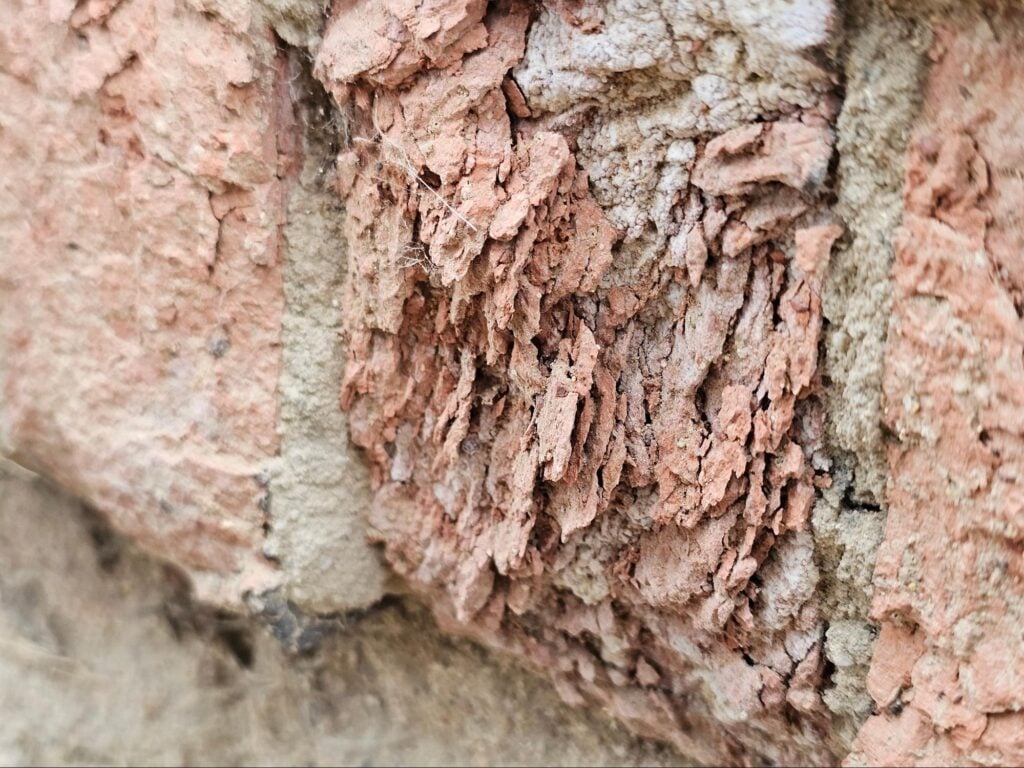
Freeze-Thaw Cycles – Water seeping into porous brick freezes and expands in cold weather. This exerts internal pressures that can detach layers or fragments from the surface when it thaws. Repeated freeze-thaw cycles intensify deterioration.
Salt Crystallization – Salts dissolved in water or from pollution crystallize inside bricks. These salt crystals expand, exerting pressures that crack and spall the brick. Rising damp often transports damaging salts into masonry.
Chemical Weathering – Pollutants like sulfur dioxide or acid rain chemically interact with brick components, degrading bonds between silicates. This leads to granular disintegration of the brick surface.
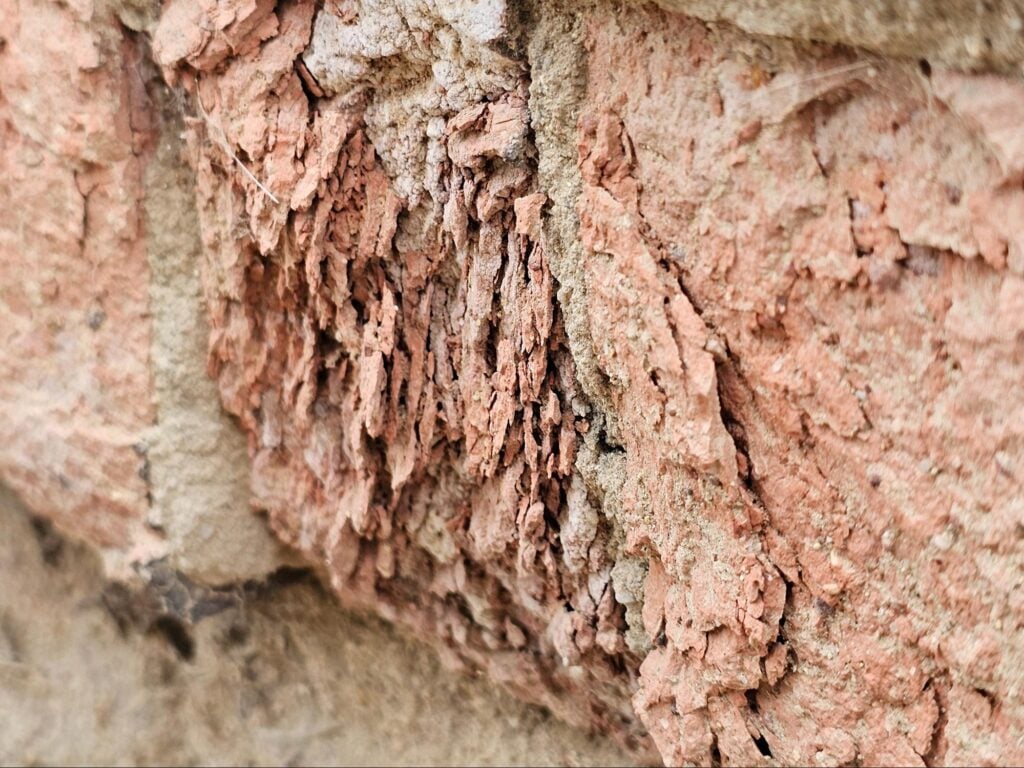
Moisture Damage – Prolonged water absorption erodes bricks and weakens the clay structure. Freeze-thaw and salt crystallization worsen the effects. Rising damp and rain penetration drive moisture damage.
Poor Brick Firing – Insufficient firing fails to properly vitrify and strengthen the clay body. Under-fired bricks are porous and prone to moisture damage and erosion. Over-firing makes bricks too vitreous, promoting spalling.
Erosion – Wind-driven rain or sandblasting erodes the brick surface over time, especially on exposed walls. Softer bricks are particularly vulnerable.
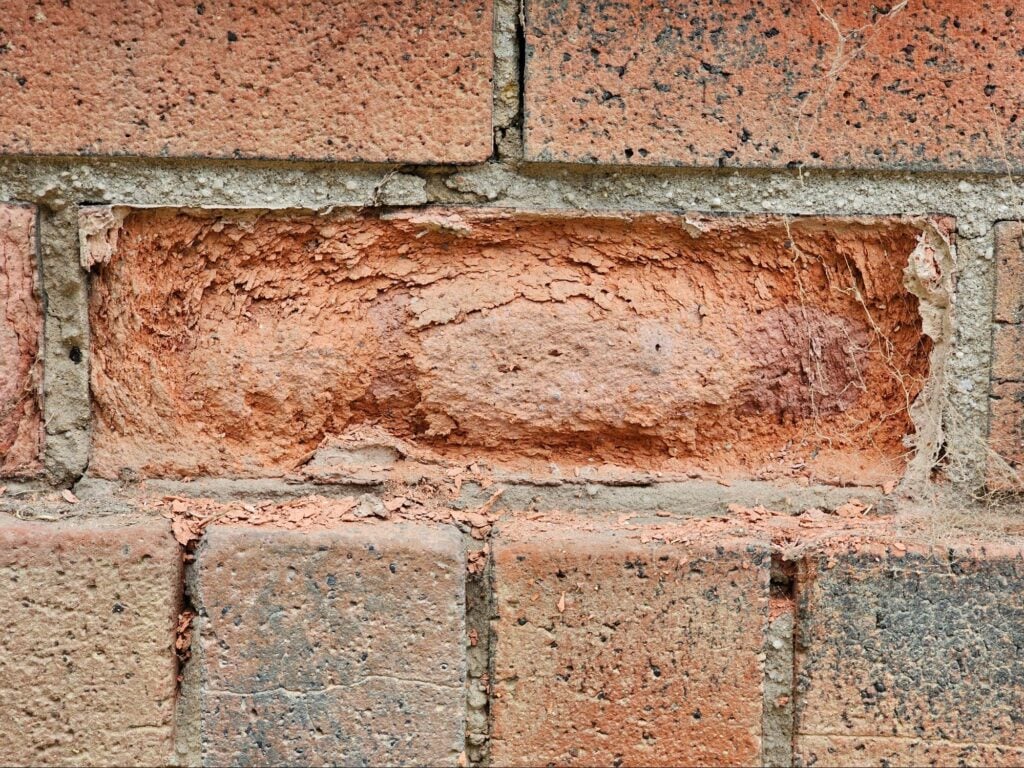
Pollution – Acid rain, sulfur dioxide and other industrial pollutants in the environment chemically attack brick surfaces and joints. Black crusts often indicate pollution damage.
Under-fired Bricks – Early mass production lacked precise firing technology. Many historic bricks were fired at low temperatures, leaving them porous and under-vitrified. These softer, permeable bricks readily suffer freeze-thaw and moisture damage.
In addition, poor quality raw clay with excessive laminations can flake apart, especially if under-fired. Low strength mortar also fails to properly bond bricks, accelerating deterioration. Using too much lime can also compromise durability.
Often, spalling results from a combination of these factors acting in parallel. For example, pollution and erosion may degrade a surface, allowing water and salts to penetrate further into the weakened brick, leading to subsurface deterioration. A holistic diagnosis identifies the contributing factors to target repairs accordingly. Just fixing joint issues without addressing brick damage, for example, leads to renewed spalling. By understanding the likely causes in a given context, appropriate repairs can be designed for lasting results.
Types of Spalling
Spalling in masonry can occur in different locations and to varying depths based on the deterioration mechanism. Common types include:
Surface Spalling – This affects the exterior face of the masonry. Surface grains, layers or chips detach from the brick or stone face under weathering stresses. Erosion, freeze-thaw and chemical weathering commonly cause surface spalling.
Sub-surface Spalling – Rather than the exposed face, fractures and separations occur slightly inside the unit below the surface. This leaves the face intact but with hollow areas behind it. Sub-surface spalling results from moisture, salts and improper repointing. The surface may eventually collapse as deterioration progresses.
Edge Spalling – Spalling confined to the edges and corners of the masonry units. Low strength mortar failing to protect edges accelerates this. Damage starts on the corners, which deteriorate faster. Edge spalling may penetrate deeper into units.
In addition to location, patterns can indicate causes:
- Granular disintegration suggests chemical weathering.
- Scaled or layered spalling implies freeze-thaw cycling.
- Cracking and fragmenting points to salt crystallization.
- Pitting and surface cavities typically arise from improved repointing.
The depth and progression of spalling provides insight into the stage of deterioration. For example, minor surface pitting may precede cracks propagating deeper into units. Spalling initiating at unit edges tends to continue into the brick bodies. Identifying patterns and location aids diagnosis and repair.
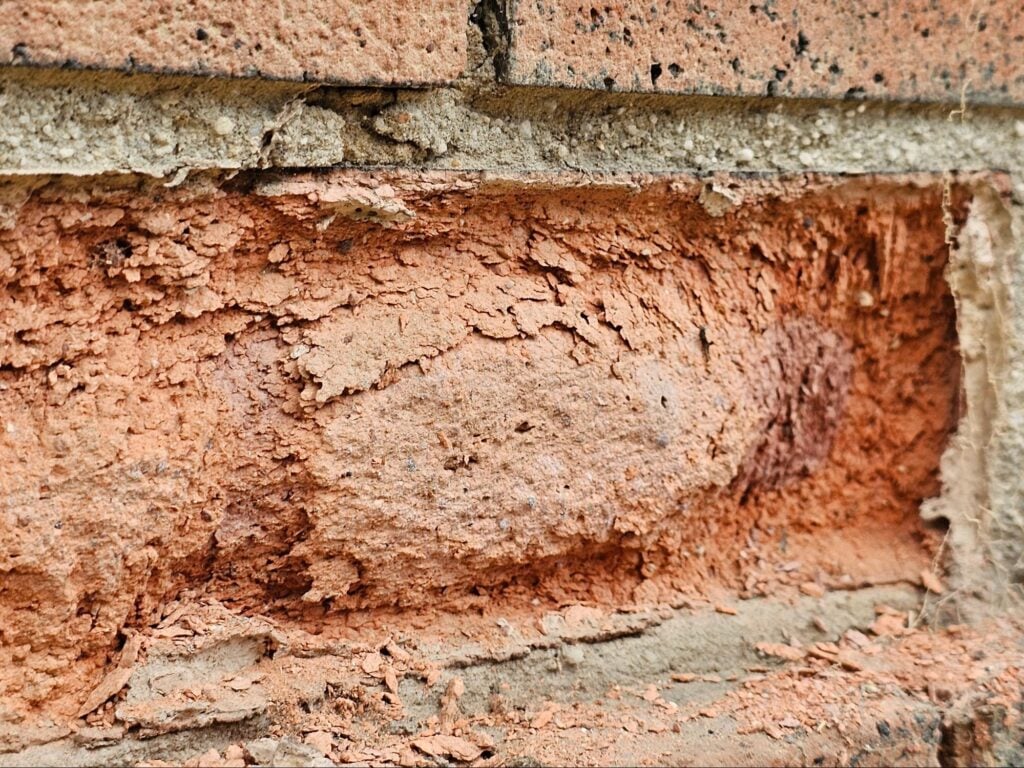
Understanding the chemical and material science behind this brick failures and defects is essential for implementing effective preservation strategies and mitigating the long-term impact of moisture-related damage on historic buildings. As stewards of our built heritage, we remain committed to employing innovative solutions that address these challenges while preserving the building facades and historic masonry buildings assemblies here in historic Washington, DC.
You can reach us by telephone at (202) 796-7644 and you can reach us by email from the contact form on our website at https://duponttuckpointingmasonrydc.com/contact-us/.
